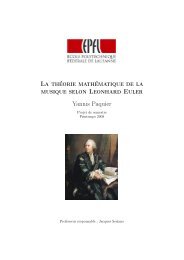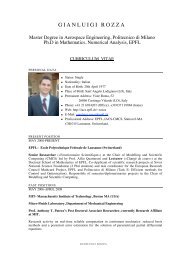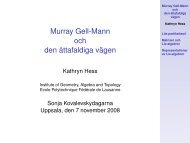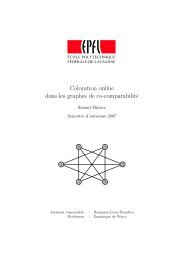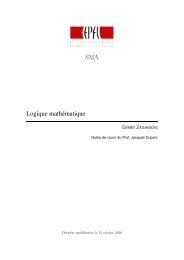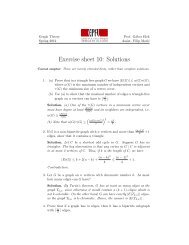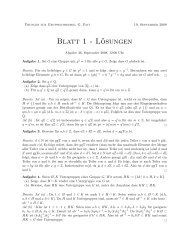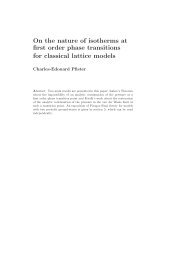Decision Models in Skiable Areas - EPFL
Decision Models in Skiable Areas - EPFL
Decision Models in Skiable Areas - EPFL
You also want an ePaper? Increase the reach of your titles
YUMPU automatically turns print PDFs into web optimized ePapers that Google loves.
6 MODEL OF DEMAND IN A SKIABLE AREA 16<br />
Name Value Std err t-test<br />
Attelas 2 2.59 0.15 17.45<br />
Mont-Gel -4.66 0.72 -6.50<br />
La Combe 1 3.62 0.46 7.90<br />
La Combe 2 -0.01 0.12 -0.08 *<br />
Mont-Fort 0.00 fixed<br />
Funipace 1.99 0.09 23.26<br />
Max black 0.07 0.04 2.03<br />
Maxmax black -0.89 0.04 -21.99<br />
M<strong>in</strong> red -1.60 0.10 -15.71<br />
M<strong>in</strong>max red -1.71 0.03 -52.23<br />
Protection 0.34 0.04 7.56<br />
Sieges 2.26 0.12 18.77<br />
Figure 7: Results of the model avoid<strong>in</strong>g the hypothesis that a black level ski slope is<br />
two times more difficult than a red one. The star (*) means that the correspond<strong>in</strong>g<br />
coefficient fails the significance test.<br />
F<strong>in</strong>ally, two different types of strategically places were def<strong>in</strong>ed. The first type are<br />
places from where a lot of lifts are leav<strong>in</strong>g. The second type are places where a lot of<br />
lifts are end<strong>in</strong>g. In the case of Verbier, the strategically places of the first type are<br />
• ”Les Ru<strong>in</strong>ettes”<br />
• ”La Chaux”<br />
• ”Tort<strong>in</strong>”<br />
and there are two places of the second type<br />
• ”Les Attelas”<br />
• ”Col des Gentianes”<br />
But the constants correspond<strong>in</strong>g to ”Tort<strong>in</strong>” and ”Col des Gentianes” are elim<strong>in</strong>ated<br />
because of lack of data <strong>in</strong> this part of the area. Also the constant correspond<strong>in</strong>g to ”La<br />
Chaux” is elim<strong>in</strong>ate because it fails the significance test and the hypothesis that it exists<br />
has to be rejected.<br />
These all together forms the F<strong>in</strong>al Model, derived from the Basic Model. The<br />
parameters and coefficients of the F<strong>in</strong>al Model are estimated with the large collection<br />
of about 7000 choices from the data. The result is illustrated <strong>in</strong> Figure 8.<br />
6.1.5 Interpretation of the F<strong>in</strong>al Model<br />
In this section, the result is tried to be <strong>in</strong>terpreted. First the coefficients are <strong>in</strong>terpreted,<br />
then the constants.<br />
Interpretation of the signs of the coefficients<br />
• Max noir (negative):<br />
A lift, where the maximal difficulty of ski slopes leav<strong>in</strong>g from the top is black, is<br />
less attractive than a lift where it is a blue one. This sign can not be <strong>in</strong>terpreted.



